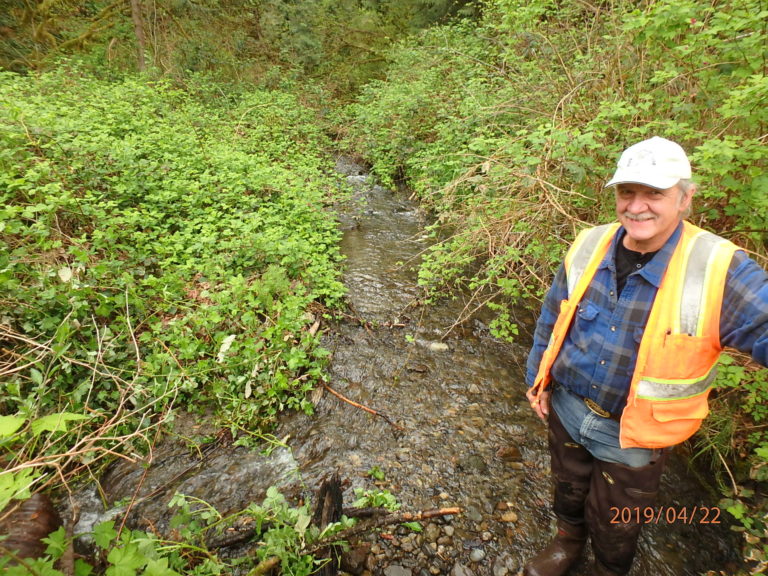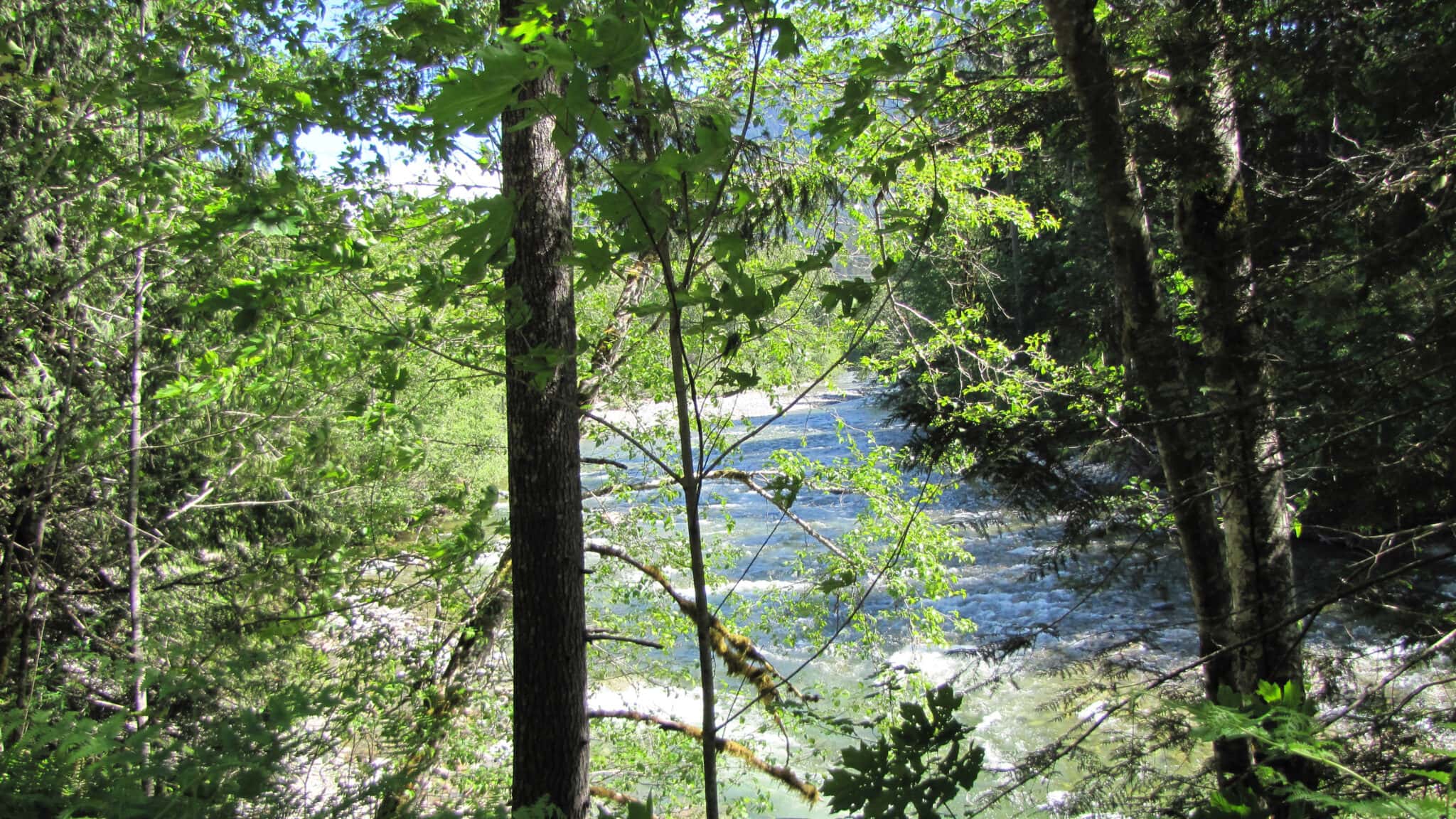

Historic logging and clearing of large wood debris (LWD) from Beckler River, a tributary to the South Fork Skykomish in western Washington state, has contributed to channel incision, and a reduction in the numbers of pools, islands, seasonal side channels, the amount of cover, and the overall channel complexity. This has reduced the availability of spawning and rearing habitat, including seasonally inundated off-channel habitat, available to federally listed salmonids such as Chinook, steelhead and bull trout.
Over the course of this project Wild Fish Conservancy (WFC) engineers and ecologists developed restoration treatment designs, including Engineered Log Jams (ELJs), to capture and retain sediment in the mainstem of Beckler River. When implemented, this restoration will improve aquatic habitat diversity and reconnect the channel to its historic floodplain. The designs developed in this project are an important step towards the development of a restoration treatment for the entire alluvial fan of Beckler River. They hydrologic effects ELJs will improve the instream habitat conditions for all native fish species, including ESA listed Chinook salmon, Steelhead and Bull Trout, which all use this reach. They will also improve connectivity between the river and its floodplain. This will likely resulting in the development of off channel habitat, which serves as important rearing habitat for coho salmon as well as flood refuge habitat for all juvenile salmonids.
Remote sensing with Green (bathymetric) LiDAR applications was used to create a map of the project area. This was more time efficient and more cost effective than previously used topographic methods.
This project is ongoing.
Location | Start Date |
|---|---|
Confluence of Beckler River & South Fork Skykomish, King County, western Washington state | 12/08/2016 |
Project Type | Completion Date |
|---|---|
Restoration | 11/30/2018 |
The goal of the project is to reconnect the lower Beckler River to its historic alluvial fan. Restoring historic structural elements (LWD) to the reach will alter sediment routing, sorting patterns, dissipate flood flows, and increase channel roughness. By altering the river in this way, it will increase habitat complexity in the reach, benefiting salmonid populations trapped and hauled above Sunset Falls by Washington Department of Fish and Wildlife (WDFW).
Primary Habitats Impacted By Project: | Managing Agency/ Organization: |
|---|---|
Riparian stream channels | Wild Fish Conservancy |
Project Contact: | Budget or Project Cost: |
|---|---|
Micah Wait | $585,505.00 |
Funding Sources: | Partners: |
|---|---|
Puget Sound Acq. & Restoration, Washington State Recreation and Conservation Office | Land owner Joseph Neal |
Join our mailing list to recieve important updates on our work, the latest wild fish news, & opportunities to take action to support wild fish.
This site is protected by reCAPTCHA and the Google Privacy Policy and Terms of Service apply.
Wild Fish Conservancy is recognized as a 501(c)3 non-profit by the IRS